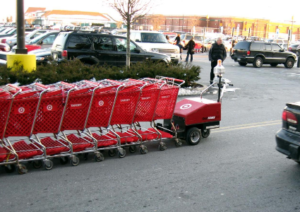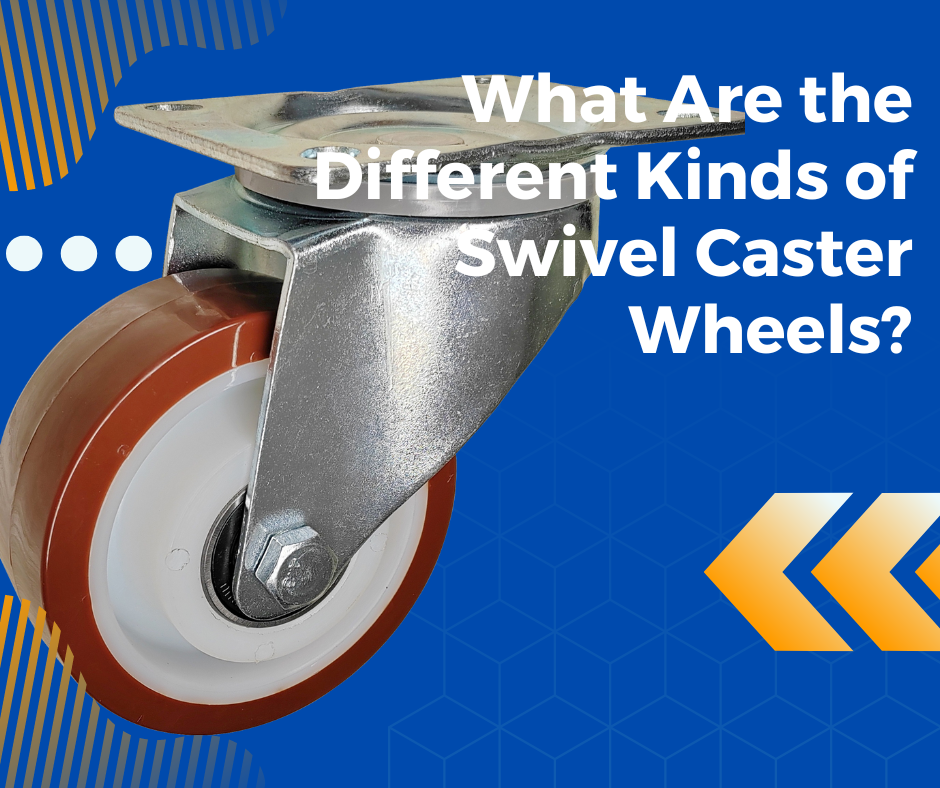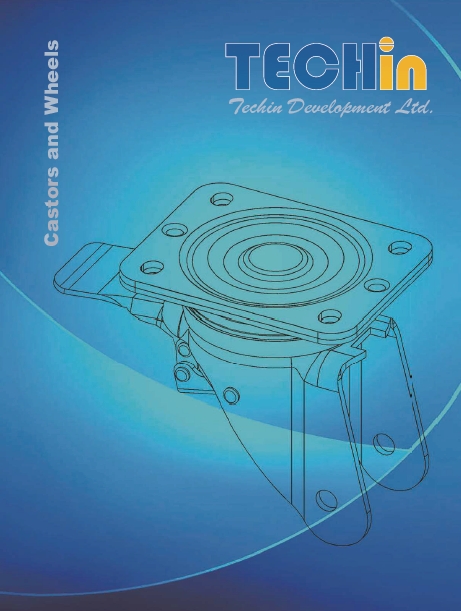If you’ve ever struggled with a shopping cart that suddenly stops moving, you’ve likely encountered a caster wheel lock. These locks play a crucial role in keeping shopping carts where they belong and ensuring safety in retail environments. By preventing carts from being taken off-premises or from rolling away unintentionally, caster locks protect both the store’s assets and the customers’ convenience. Understanding how they work can help you appreciate their importance and the engineering behind this seemingly simple yet highly effective mechanism.
Traditional caster locks involve a mechanical system where a brake or lock is engaged manually or automatically to prevent the wheel from rotating. These locks are essential for ensuring shopping carts remain stationary, providing safety and security in retail environments.
Understanding the mechanics and benefits of these locks can help in making informed decisions about their use.

How Do Caster Wheels on Shopping Carts Lock?
Traditional caster locks work by using a mechanical system that engages either manually or automatically. When a manual lock is engaged, typically by pressing a lever or pedal, the mechanism applies pressure to the wheel, stopping it from rotating. Automatic locks function in a similar way but are triggered by specific conditions, such as passing a boundary line in the parking lot. The locking mechanism might include a brake pad that presses against the wheel or a pin that slots into place to immobilize the wheel. This system is straightforward yet effective, ensuring that the cart remains stationary when necessary.
What Types of Caster Locks Are Used in Shopping Carts?
There are several types of caster locks used in shopping carts, each serving a specific purpose:
- Manual Locks: These are engaged by pressing a lever or pedal. They are simple to use and allow the user to lock the wheel whenever needed.
- Swivel Locks: These locks restrict the rotation of the caster wheel, allowing the cart to move only in a straight line. This is particularly useful in narrow aisles where control over the cart’s direction is important.
- Brake Locks: These locks apply pressure directly to the wheel, preventing it from rolling. Brake locks are often used when the cart needs to be completely stationary, such as when loading or unloading groceries.
Each type of lock offers unique benefits, and the choice of lock can depend on the specific needs of the retail environment.
How Do Manual Caster Locks Work?
Manual caster locks typically use a lever or pedal mechanism. When activated, this mechanism applies pressure to the wheel, preventing it from rotating. For example, a lever might push a brake pad against the wheel’s surface, creating friction and stopping the wheel. Alternatively, a pedal might cause a pin to slot into a groove in the wheel, locking it in place. This simple mechanical action is highly effective and allows the user to lock the wheel easily when needed. Manual locks are reliable and easy to maintain, making them a popular choice in many retail settings.
Why Are Caster Locks Important for Shopping Carts?
Caster locks are crucial for several reasons:
- Safety: By preventing carts from rolling away, caster locks reduce the risk of accidents. This is particularly important in busy parking lots where an unattended cart could cause damage to vehicles or injure pedestrians.
- Security: Caster locks help prevent theft by keeping carts within the store premises. This not only protects the store’s assets but also ensures that carts are always available for customers.
- Convenience: Caster locks ensure that carts remain stationary when loading or unloading groceries. This stability is essential for preventing spills and making the shopping experience more convenient.
Overall, caster locks enhance the safety, security, and convenience of shopping carts, making them an indispensable feature in any retail environment.
How Can Damaged Caster Locks Be Repaired?
Damaged caster locks can often be repaired by replacing the mechanical components, such as the brake pads or locking mechanism. For example, if a brake pad is worn out, it can be replaced with a new one to restore the lock’s functionality. Similarly, if the locking mechanism is damaged, it can be replaced or repaired to ensure that it operates smoothly. Regular maintenance, such as cleaning debris from the locking mechanism and lubricating moving parts, can also help prevent damage and ensure longevity. In some cases, it might be necessary to replace the entire caster wheel if the damage is severe.
What Materials Are Used in Caster Locks for Shopping Carts?
Caster locks are typically made from durable materials like stainless steel or reinforced plastic. Stainless steel is favored for its strength and resistance to corrosion, making it ideal for use in wet or humid environments. Reinforced plastic, on the other hand, is lightweight and resistant to impact, making it a good choice for parts that need to withstand frequent use and heavy loads. These materials are chosen for their ability to endure the rigors of daily use in a retail environment, ensuring that the locks remain functional and reliable over time.
How Do Swivel Locks on Shopping Cart Casters Work?
Swivel locks restrict the rotation of the caster wheel, allowing the cart to move only in a straight line. This feature is particularly useful in narrow aisles or when straight-line movement is preferred. The swivel lock works by engaging a mechanism that prevents the caster from turning, thus forcing the wheel to move only forward or backward. This can be activated manually by a lever or pedal, similar to other types of caster locks. Swivel locks provide greater control over the cart’s movement, making it easier to navigate tight spaces.
How Are Caster Locks Maintained?
Regular maintenance of caster locks involves several key steps:
- Cleaning: Removing debris from the locking mechanism to ensure smooth operation. This can be done using a brush or compressed air.
- Lubricating: Applying lubricant to moving parts to reduce friction and prevent wear. This helps ensure that the lock engages and disengages smoothly.
- Inspecting: Regularly checking for wear and tear and replacing worn parts as needed. This might involve inspecting brake pads, levers, and other components for signs of damage.
By following these maintenance steps, you can ensure that caster locks remain functional and reliable, extending their lifespan and maintaining their effectiveness.
Can Caster Locks Be Added to Any Shopping Cart?
Yes, caster locks can be retrofitted to most shopping carts. However, it’s important to choose the correct size and type to ensure compatibility and effectiveness. When adding caster locks to an existing cart, it’s essential to consider the wheel size, the type of lock needed, and the cart’s overall design. Proper installation is crucial to ensure that the locks function correctly and provide the desired benefits. Consulting with a professional or referring to the manufacturer’s guidelines can help ensure a successful retrofit.
What Are the Benefits of Using Brake Locks on Shopping Cart Casters?
Brake locks provide several key benefits:
- Stability: By preventing the cart from rolling away, brake locks enhance stability, making it easier to load and unload groceries.
- Safety: Brake locks reduce the risk of accidents by keeping the cart stationary when needed. This is especially important in busy parking lots and store aisles.
- Damage Prevention: Brake locks help prevent damage to vehicles and property by ensuring that carts remain in place. This reduces the likelihood of carts rolling into parked cars or other obstacles.
Overall, brake locks enhance the safety and convenience of shopping carts, making them a valuable feature for any retail environment.
Conclusion:
Caster locks are a vital component of shopping carts, ensuring they remain stationary when necessary and providing safety and security. Understanding how these locks work and their benefits can help you appreciate their role in retail environments. Whether preventing theft, enhancing safety, or ensuring convenience, caster locks play an essential role in the functionality of shopping carts.







